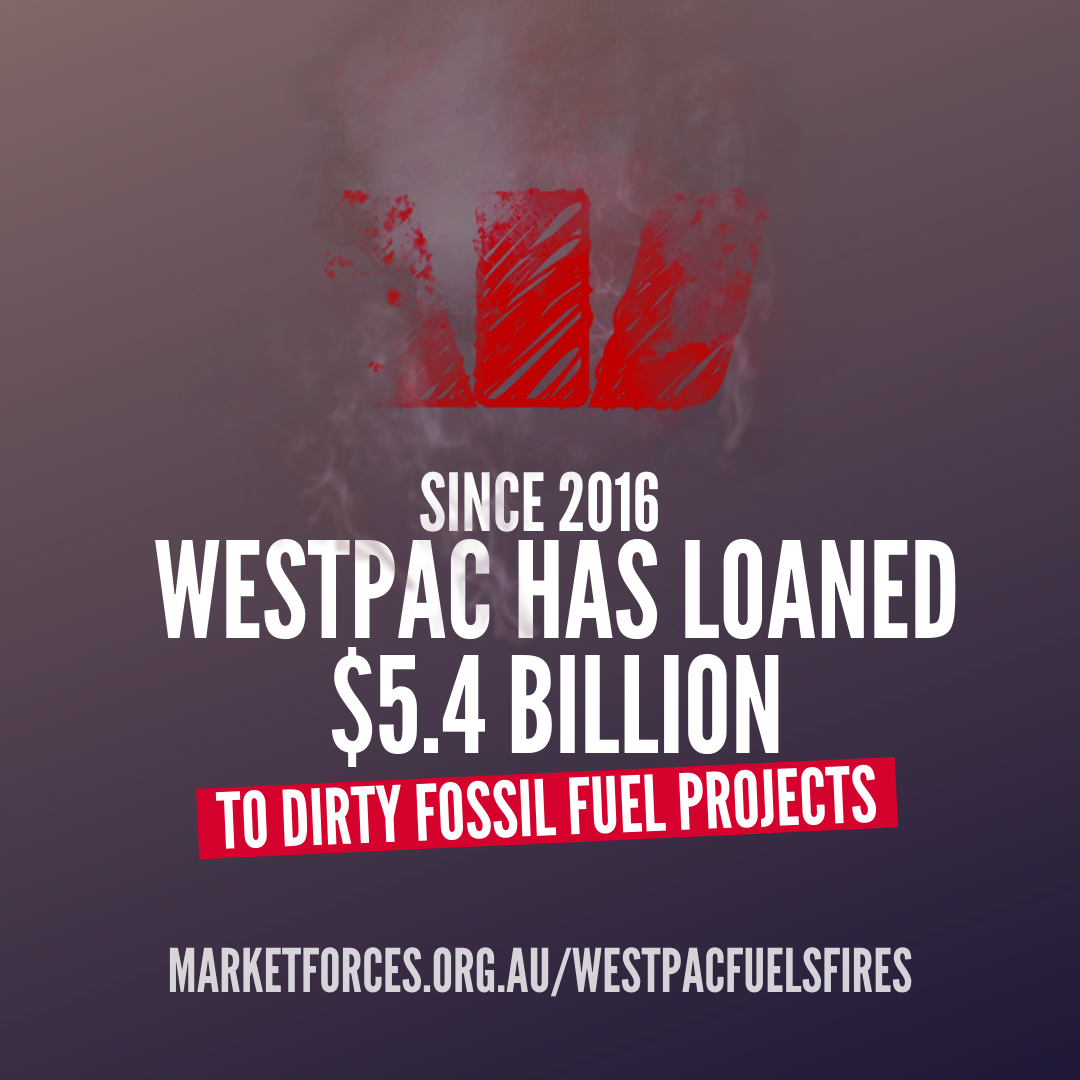5 March 2020
Australia has faced years of worsening bushfires, storms and drought since Westpac last announced a climate policy. This policy is obviously inadequate as the bank has sunk $5.4 billion into fossil fuels, including $846 million to projects that expand the scale of the industry, since it pledged to uphold the Paris climate goals at the end of 2015.

Right now, Westpac is updating its climate policy, so right now is the time to tell Westpac that it must set a policy that actually aligns with the Paris climate goals it has pledged to uphold.
This means phasing out exposure to thermal coal by 2030 at the latest and ruling out lending to any project that expand the scale of the coal, oil and gas industries.
The trends in Westpac’s fossil fuel lending are concerning. Our figures show that Westpac’s coal, oil and gas lending in 2019 was its second-highest since declaring its support for the Paris climate agreement. This is while ANZ and CommBank’s 2019 lending to fossil fuels was at its lowest level over the same timeframe.
Westpac increased its lending to oil and gas by 25% between 2018 and 2019, the 2nd highest increase year on year of the big four banks.
Westpac is expanding the scale of the fossil fuel industry in Australia
Westpac is not only lending to existing fossil fuel projects, but it's also funding projects that expand the scale of the industry, at a time when we urgently need to be reducing carbon pollution. While communities devastated by this summer’s terrifying extreme weather foot the bill for intensifying fires and storms, Westpac profits by arranging loans to the dirty industries fueling this extreme weather.
Specifically from 2016-2019, Westpac
- loaned $110 million to Woodside Energy to open up a huge area off Western Australia to polluting gas extraction;
- is one of the biggest funders of Origin energy, lending $315 million to the company that plans to open up the Northern Territory to dangerous fracking, against the wishes of the aboriginal communities in the fracking permit areas;
- was the lead arranger of the loan to Coronado, which included loaning $35 million towards the expansion of the Curragh coal mine in Queensland;
- loaned $92 million to Whitehaven coal, which is working to build a new coal mine in NSW and $54 million to Santos, which is involved in expanding unconventional gas extraction in NSW and across northern Australia;
- loaned $32 million to Horizon Oil, a company embroiled in corruption investigations after allegedly paying $15.4 million to a shell company owned by the Papua New Guinea Minister for Petroleum and Energy.
In total, Westpac has loaned $1.5 billion to companies actively undermining climate action and the Paris Agreement in the four years to 2019.
Westpac often promotes its lending to renewable energy, however, our figures show that lending to renewables over the last four years was $1.9 billion, meaning that for every dollar Westpac loaned to clean energy, it loaned $2.70 to dirty fossil fuels.
Westpac’s current climate policy allows it to continue to lend to thermal coal and to companies expanding the scale of the fossil fuel industry and our figures show that it is doing just that.
With the bank’s policy update looming, now is the time to push Westpac to commit to a policy that would actually align with their pledge to uphold the Paris climate goals.
